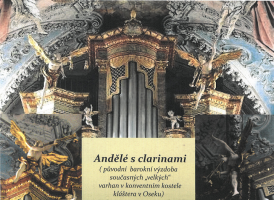Clarina (trumpet)
› Detail › Clarina (trumpet)Exhibit of the Month 1 / 2019
Clarina (trumpet)
Hans Geyer, Vienna 1675
A popular brass instrument, commonly found in musical practice throughout the 17th and 18th centuries. It was often used in both sacred and secular artistic circles. In the area of northwestern Podkrušnohoří, clarinas were almost an indispensable part of church instrumentations. Their number in some of the local high Baroque church choirs even reached around ten pieces. The origin of the exhibited instrument is very likely related to the musical activities of the Minorite convent, whose buildings stood in the center of the area of the now non-existent old town of Most. Although the presented form unfortunately does not retain its original completeness and thus appearance, it is a unique example within the North Bohemian region, additionally somewhat more artistically conceived. Currently, the "Most" clarina can only be more or less rivaled by a slightly younger instrument of the same kind, preserved in the storage facilities of the Regional Museum in Litoměřice.
Clarinist in position while playing.
Clarinas were very often adorned with so-called cords and tassels. This almost indispensable and characteristic decoration was also applied to the instruments of clarinists in northwestern Bohemia. Musicians from Duchcov, for example, decorated their instruments with decorative tassels and probably also cords, which were brought in from Litoměřice that year. The same was true in Fláje during the years 1734 and 1735, in Horní Jiřetín in 1705, or in Teplice, where there is a report dated as early as 1685. Tassels and cords were created in various colors. For instance, in the aforementioned Teplice, they were red and white, while in Mariánské Radčice at the end of the 1730s and the beginning of the 1740s, they were green and white. However, the clarinist's instrument in the picture unfortunately lacks these described decorative elements.





